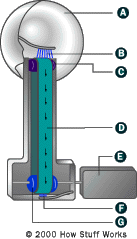The Generator

Now that you understand something about electrostatics and static electricity, it is easy to understand the purpose of the Van de Graaff generator. A Van de Graaff generator is a device designed to create static electricity and make it available for experimentation.
The American physicist Robert Jemison Van de Graaff invented the Van de Graaff generator in 1931. The device that bears his name has the ability to produce extremely high voltages -- as high as 20 million volts. Van de Graaff invented the generator to supply the high energy needed for early particle accelerators. These accelerators were known as atom smashers because they accelerated sub-atomic particles to very high speeds and then "smashed" them into the target atoms. The resulting collisions created other subatomic particles and high-energy radiation such as X-rays. The ability to create these high-energy collisions is the foundation of particle and nuclear physics.
Advertisement
Van de Graaff generators are described as "constant current" electrostatic devices. When you put a load on a Van de Graaff generator, the current (amperage) remains the same. It's the voltage that varies with the load. In the case of the Van de Graaff generator, as you approach the output terminal (sphere) with a grounded object, the voltage will decrease, but the current will remain the same. Conversely, batteries are known as "constant voltage" devices because when you put a load on them, the voltage remains the same. A good example is your car battery. A fully charged car battery will produce about 12.75 volts. If you turn on your headlights and then check your battery voltage, you will see that it remains relatively unchanged (providing your battery is healthy). At the same time, the current will vary with the load. For example, your headlights may require 10 amps, but your windshield wipers may only require 4 amps. Regardless of which one you turn on, the voltage will remain the same.
There are two types of Van de Graaff generators: one that uses a high-voltage power supply for charging and one that uses belts and rollers for charging. Here we will discuss the belts-and-rollers type.
This kind of Van de Graaff generator is made up of:
- A motor
- Two rollers
- A belt
- Two brush assemblies
- An output terminal (usually a metal or aluminum sphere)
When the motor is turned on, the lower roller (charger) begins turning the belt. Since the belt is made of rubber and the lower roller is covered in silicon tape, the lower roller begins to build a negative charge and the belt builds a positive charge. You can understand why this charge imbalance occurs by looking at the triboelectric series: Silicon is more negative than rubber; therefore, the lower roller is capturing electrons from the belt as it passes over the roller.
In the next section we'll look at how the charge is concentrated.
